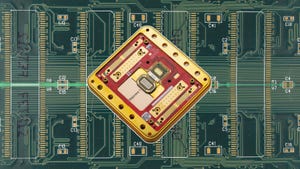
Insight and analysis on the data center space from industry thought leaders.
Plugging the Mainframe Skills Gap: Three Ways to Tackle a Looming CrisisPlugging the Mainframe Skills Gap: Three Ways to Tackle a Looming Crisis
To stop the current skills challenge from becoming a full-blown crisis, organizations need to nurture a new generation of mainframe workers, writes Jacky Hofbauer.
June 13, 2024

In the race for competitive advantage, there is an obsession with technological innovation. While newspaper articles fixate on the latest generative AI models, few heads are turned by decades-old mainframe computing systems. Yet these digital workhorses have been running critical operations for global businesses since the 1960s and continue to do so today. There’s just one problem: these same enterprises are finding it increasingly difficult to recruit the talent needed to manage such systems. That could spell trouble ahead.
To stop the current skills challenge from becoming a full-blown crisis, organizations need to nurture a new generation of mainframe workers. Fortunately, technology exists today to both help them close skills gaps and reduce their workload.
The Mainframe Still Matters
Contrary to popular perception, mainframe technology is arguably as important today as it was when it represented the cutting edge of IT innovation some 60 years ago. According to IBM, which pioneered big iron, businesses continue to rely on mainframes to process large-scale transactions (in the thousands per second), manage terabytes of information in databases, and handle large-bandwidth communication, among other things.
That’s why an estimated 44 of the world’s top 50 banks and 67 Fortune 100 companies still use mainframes. They prize the technology’s continued reliability, availability, and serviceability, as well as its native security and scalability benefits. And opportunities also abound to leverage the power of the mainframe in emerging AI and quantum computing projects.
The Mainframe Skills Crisis
However, both existing operations and mainframe-powered business growth are imperiled by a growing skills shortage. As far back as 2020, Deloitte and Forrester published research warning that “acquiring the right resources and skills to get work done” was the number one mainframe-related challenge of 79% of IT and business leaders. If anything, the challenge is more acute today.
To help address it, IBM has unveiled a number of recent strategies, including a new Mainframe Skills Council with focus areas including career awareness, competency frameworks, learning paths, and professional development. It also launched an IBM Z Mainframe Skills Depot with mainframe-training tracks focused on roles such as mainframe system administrator, mainframe application developer, and modernization architect.
However, it’s debatable whether such initiatives will be enough. Research from Futurum claims that 91% of organizations are planning to hire for new mainframe positions in the next 1-2 years.
In particularly high demand are COBOL programming skills – essential for mainframe development but increasingly shunned by graduates. Others include assembler and systems programming skills – the latter important for managing and maintaining mainframe operating systems and related software, with performance tuning, system upgrades, and troubleshooting.
Database administration is also in demand – that is, deep knowledge of database management, optimization and security for mainframe databases like DB2 and IMS. Even if organizations do find talent with mainframe experience, the multiplicity of roles and systems can make it hard to find people with the exact skills required.
A New Approach
The good news is that emerging technology can help to fill many of these skills gaps. Consider generative AI, which is helping to increase productivity and upskill workers in roles as diverse as SecOps and customer service. It can also play a part here, by acting as a coding assistant to alleviate COBOL skills gaps.
There are also powerful but easy-to-use observability tools on the market designed to help mainframe administrators monitor, analyze, and visualize system behavior and resource usage. They extract invaluable insight from IT systems management data to enhance performance, streamline resource allocation, and drive cost efficiencies – as well as enhance long-term resource planning and cost control.
Many such tools are designed with usability in mind, and this can help to minimize the need for organizations to hire or train specialized technicians. IT buyers should search for platforms that offer self-service functionality including the ability to develop personalized dashboards. And those that can be operated via modern, easy-to-use web applications, as opposed to overly complicated and outdated controls. It should be possible to manage and monitor mainframe operations and even transform mainframe data into open data from a single pane of glass – in just a few clicks.
The latter is key to helping integrate mainframe technology into modern IT infrastructure. Why does this matter? Because it means organizations can run their workloads where it makes the most sense to do so – optimizing their use of technical and human resources. Thus, heavy-duty processing could be done on the mainframe while analytics are pushed out to the cloud.
And in so doing, they can lighten the load on potentially stretched mainframe teams and enable non-technical experts to easily configure and customize tools.
Looking to the Next Generation
As such tools are adopted in greater numbers, mainframe will hopefully become more appealing to the next cohort of IT graduates entering the workforce. But hiring managers must also play their part – by ensuring these individuals are aware of the wealth of opportunities that exist in the mainframe space.
In a competitive jobs market, many computer science grads would jump at the chance of working at a Fortune 500 enterprise or large IT integrator, on critical global operations. It’s time to kickstart their journey.
Jacky Hofbauer is the President and CSO of Zetaly, a software company that helps large enterprise better observe, manage, and optimize the performance of their mainframes. With over 30 years of work experience, Jacky is a passionate and driven leader in the field of mainframe software development and IT service management.
About the Author
You May Also Like









